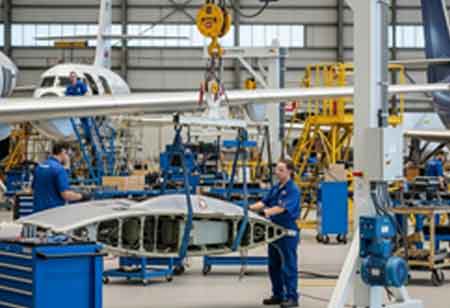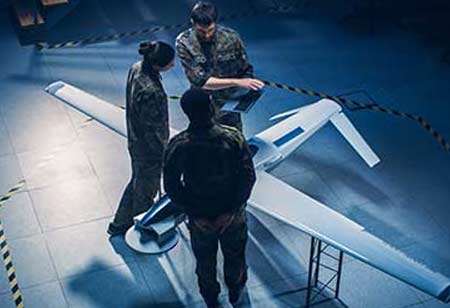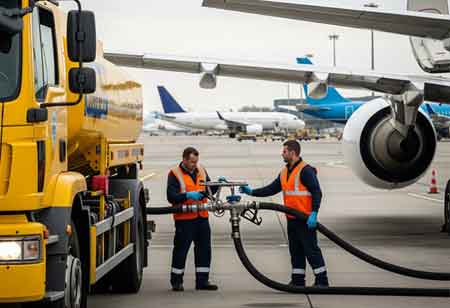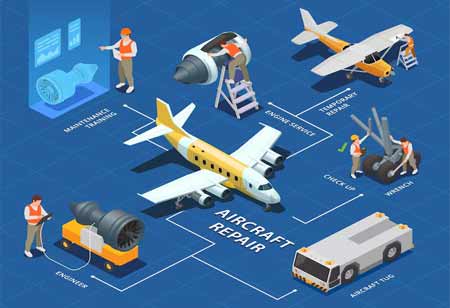The aircraft maintenance hoist system is an indispensable tool within the aviation maintenance landscape, explicitly designed to lift, position, and maneuver heavy aircraft components such as engines, landing gear, and large structural parts. In response to the aviation sector’s continuous growth and evolving technological demands, the aircraft maintenance hoist systems market is experiencing notable shifts.
A predominant trend is the increasing emphasis on integrating advanced safety features that comply with rigorous aviation standards. These systems must handle substantial loads while minimizing risks to personnel and costly aircraft components. As aircraft models become more sophisticated, hoist systems adapt with modular designs and customizable configurations tailored to specific maintenance scenarios. This flexibility allows maintenance teams to efficiently service a broader range of aircraft, from regional jets to wide-body airliners, using fewer specialized tools.
Market demands are driving the adoption of digital technologies within hoist systems. Incorporating smart sensors, IoT-enabled devices, and automation capabilities enhances system monitoring, enabling predictive maintenance and real-time diagnostics. These innovations help prevent unexpected failures by alerting technicians to potential issues before they arise, thus improving overall operational efficiency. The trend toward lightweight yet high-strength materials such as advanced composites and alloys enables the production of easier hoists to install and relocate within maintenance hangars. This improves workflow flexibility and reduces setup time during routine and unscheduled aircraft servicing.
Operational Challenges in Aircraft Maintenance Hoist Systems and Their Practical Solutions
Despite the advancements, deploying aircraft maintenance hoist systems involves several operational challenges, each addressed by tailored engineering and procedural solutions. One of the primary challenges is ensuring the absolute safety of personnel and equipment when lifting heavy and often delicate aircraft components. The failure of a hoist system under load can lead to severe damage and costly delays.
To mitigate this, modern hoist systems have multiple redundant safety features, including automatic load-limiting devices, emergency braking systems, and fail-safe locking mechanisms that engage instantly if abnormalities are detected. These safeguards ensure the system responds appropriately to overload conditions or mechanical faults, reducing accident risks.
Another critical challenge arises from the variability in aircraft design and the physical constraints of maintenance environments. Aircraft maintenance hangars vary in size and configuration, and aircraft components differ widely in shape, size, and weight distribution. Manufacturers are developing hoist systems with adaptable mounting options, adjustable lift heights, and interchangeable lifting attachments to address these issues.
This versatility allows a single hoist system to serve multiple purposes across various aircraft types, reducing the need for numerous specialized units and improving cost efficiency. Advanced control interfaces incorporating ergonomics and automation help minimize operator fatigue and improve accuracy during delicate maneuvers. Features like remote control operation, programmable lift sequences, and automated positioning reduce human error and increase precision.
Maintenance and reliability pose another challenge, particularly given the continuous operational demands in busy maintenance hubs. Downtime due to equipment failure can disrupt maintenance schedules and increase costs. Proactive solutions integrate condition-monitoring sensors that track parameters such as motor temperature, wire rope tension, and hydraulic pressure. This data supports predictive maintenance strategies where parts are serviced or replaced before failure occurs, optimizing equipment uptime. Regular training programs further ensure that operators remain skilled in handling the equipment safely and effectively, contributing to overall system reliability.
Growth Potential and Innovations Enriching Stakeholder Value
The future of aircraft maintenance hoist systems is characterized by promising growth opportunities fueled by innovation and heightened stakeholder focus on operational excellence. Technological advancements in automation and digital integration transform hoist systems into intelligent tools that do more than simply lift loads. Real-time load monitoring and IoT connectivity allow maintenance managers to track hoist performance remotely and schedule maintenance proactively. This reduces unexpected failures and streamlines maintenance workflows, improving fleet availability and reducing turnaround times.
Materials science innovations also play a critical role. Using high-strength, lightweight alloys and composites reduces the physical footprint of hoist systems while maintaining or increasing their load capacity. This portability and ease of installation benefit technicians who work in confined spaces or need to frequently reposition equipment. Lightweight systems also contribute to reduced wear and energy consumption, further lowering operating costs.
Beyond hardware improvements, integrating augmented reality and virtual reality technologies in training programs is an emerging trend that significantly benefits stakeholders. These immersive training platforms allow maintenance personnel to practice using hoist systems in virtual environments, familiarizing themselves with controls, safety protocols, and emergency procedures without risking damage or injury. Enhanced training results in fewer errors, higher safety standards, and increased operator confidence.
The sector’s growing focus on sustainability influences the design of aircraft maintenance hoist systems. Energy-efficient motors, regenerative braking systems that recover energy during lowering operations, and environmentally friendly manufacturing processes are becoming standard considerations. These improvements align with broader industry goals of decreasing environmental impact and improving the overall efficiency of maintenance operations.









